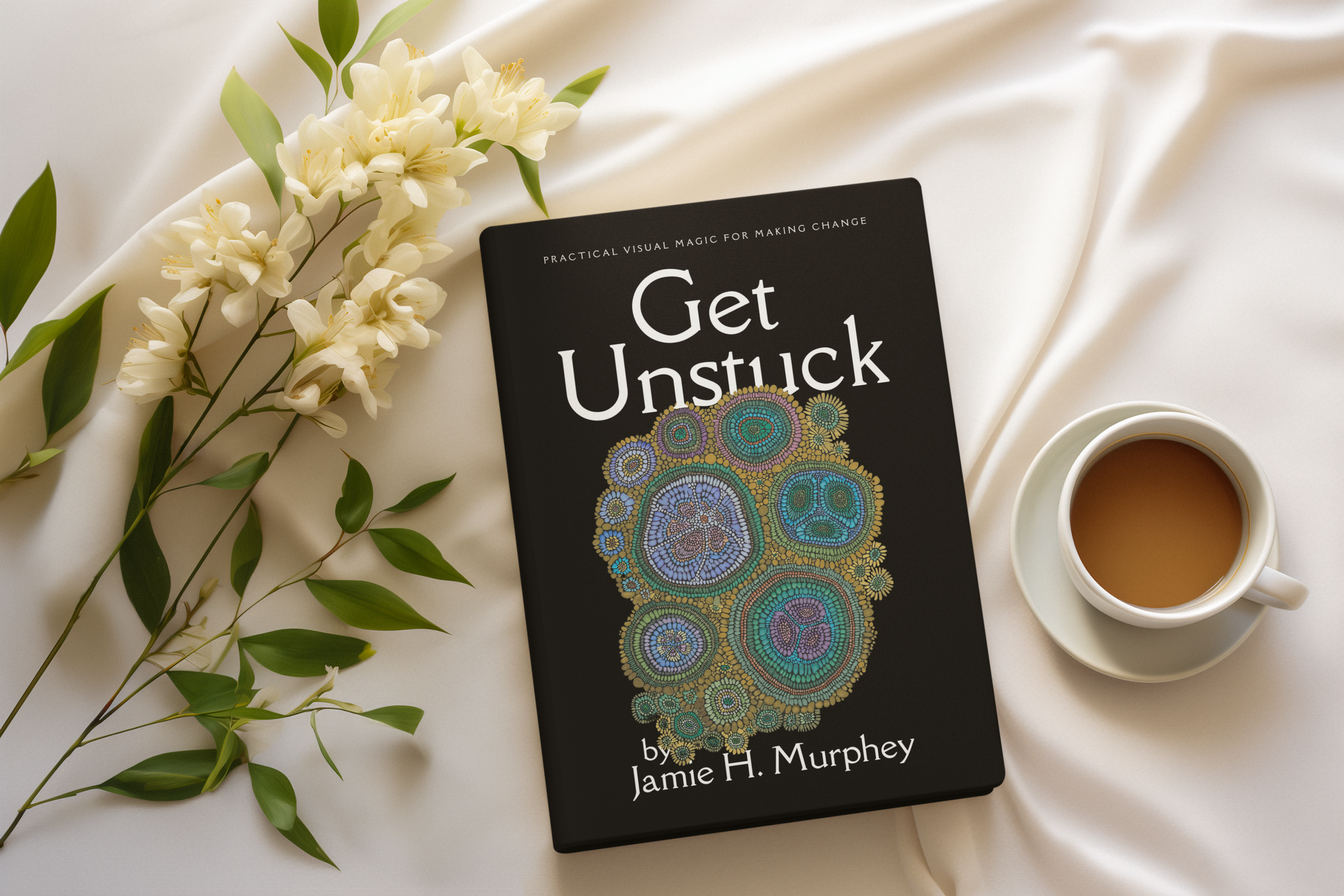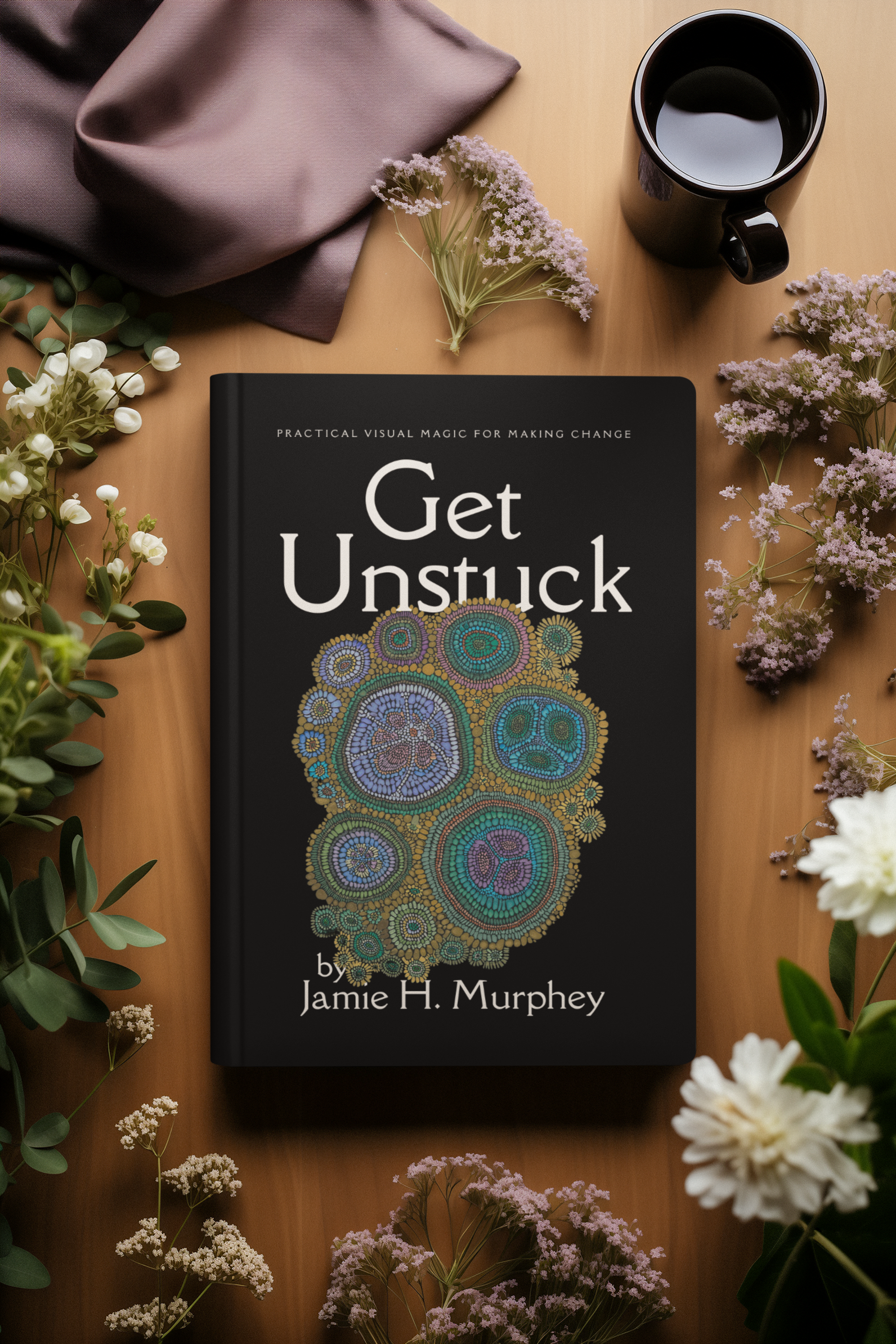Why Your Biggest Block Is Actually Your Best Friend (And How to Finally Introduce Yourself)
Here's what most people do when they identify their biggest obstacle: they try to fight it.
They create action plans to overcome it. They use willpower to push through it. They give themselves pep talks about why they shouldn't be afraid. They treat their fear, their resistance, their stuck places like enemies to be defeated.
And here's what happens: the block gets stronger.
Because what we resist persists. What we fight fights back. And that fear, that resistance, that thing that keeps showing up to stop you? It's not actually your enemy. It's carrying medicine you need, wisdom you've been avoiding, energy that's been trapped and wants to flow.
What if instead of fighting your blocks, you could actually have a conversation with them?
What if you could discover what they're trying to protect, what they need, what they're actually asking for? What if the thing that feels like your biggest obstacle is actually your most important teacher?
This is what happens when you learn to meet your blocks instead of beating them.
The Revolutionary Discovery That Changed Psychology
Carl Jung, the Swiss psychiatrist who gave us concepts like introversion and the collective unconscious, made a revolutionary discovery in the early 1900s. When he stopped trying to analyze his problems and started having actual conversations with different parts of himself, profound healing began to happen.
Jung discovered that the psyche isn't a monarchy with one ruler—it's more like a village full of different characters, each with their own needs, wisdom, and gifts. And the most effective way to create harmony in the village isn't through domination—it's through council.
But Jung wasn't inventing something new—he was rediscovering something ancient. Indigenous cultures worldwide have traditions of dialoguing with inner guides. Tibetan Buddhism includes practices of literally feeding your demons instead of fighting them. What all these traditions understand is that transformation happens through relationship, not warfare.
Modern neuroscience now confirms what these ancient traditions knew: when we engage different parts of ourselves through dialogue, we activate neural pathways that lead to integration, emotional regulation, and profound psychological healing.
When I Met My Procrastination (And Everything Changed)
Let me tell you about the day I first tried this approach with my own biggest block: chronic procrastination.
I was facing a deadline and once again finding myself organizing desk drawers instead of writing. The familiar shame spiral was starting: "You're so lazy. You're undisciplined. You'll never amount to anything."
Instead of fighting it this time, I decided to actually have a conversation with my procrastination. I know it sounds strange, but I created a space where this part of me could speak without judgment.
What came up surprised me completely.
Instead of the lazy, undisciplined voice I expected, what emerged was: "I need you to slow down. I need you to stop rushing toward things that might not be right for you. I need you to rest."
Suddenly, my procrastination wasn't sabotage—it was wise protection. It was trying to keep me from burning out, from saying yes to projects that didn't align with my values, from moving so fast that I missed important signals about what was actually right for me.
That conversation changed everything. Instead of fighting my procrastination, I started listening to it. And paradoxically, when I honored its need for rest and discernment, the paralysis began to dissolve.
Who This Works For (The Surprising Answer)
This approach is particularly powerful for:
High achievers who are secretly exhausted because they've been fighting themselves for years instead of working with their natural rhythms and needs.
Perfectionists who are paralyzed by their inner critic and ready to discover that their critic actually wants to help them create something beautiful.
People-pleasers who can't say no and need to understand what their boundary-setting part is trying to protect.
Chronic procrastinators who are tired of the shame cycle and ready to discover what their procrastination is actually trying to tell them.
Anyone who feels like they're their own worst enemy and suspects there might be a better way to relate to the parts of themselves that feel problematic.
Creative people who feel blocked and want to understand what their creative resistance is protecting or asking for.
The method works especially well for people who've tried willpower, motivation, and "just do it" approaches but found that fighting themselves only creates more internal conflict.
The Science of Inner Allies
Research shows that when we personify our inner conflicts and engage them through dialogue, remarkable things happen neurologically. We activate the prefrontal cortex (the wise, rational part of the brain) while calming the amygdala (the fear center). This creates the optimal brain state for emotional regulation and creative problem-solving.
Studies in Internal Family Systems therapy demonstrate that when people learn to dialogue with their "parts"—their inner critic, their wounded child, their perfectionist—these parts can relax their extreme roles and reveal their underlying gifts. The harsh critic becomes a discerning guide. The scared child becomes intuitive wisdom. The controlling part becomes protective care.
What looks like pathology from the outside is often protection on the inside. And when we understand what our blocks are protecting, we can honor that intention while finding more effective ways to meet the underlying need.
Where This Fits Into Real Life
This isn't therapy—it's a practical tool you can use anywhere, anytime you notice internal resistance or conflict. It works when you're:
Procrastinating on important projects
Feeling paralyzed by fear or anxiety
Stuck in people-pleasing patterns
Wrestling with self-doubt or imposter syndrome
Facing major decisions and feeling conflicted
Dealing with creative blocks
Noticing patterns that keep repeating in your life
The beauty of this approach is that it transforms problems at the source. Instead of managing symptoms, you're addressing the root cause of internal conflict by creating internal collaboration.
Why This Works When Everything Else Fails
Most self-help approaches try to eliminate, overcome, or fix the parts of us that feel problematic. But what if those parts aren't problems to be solved? What if they're protectors with important jobs who've just gotten a little carried away?
When you learn to meet your blocks with curiosity instead of criticism, something magical happens. The internal war ends. The energy that was trapped in conflict gets freed up for creativity and forward movement. You stop being divided against yourself and start working as an integrated whole.
This doesn't mean becoming passive or accepting dysfunction. It means understanding the positive intention behind every internal voice and then collaborating to find more effective ways to meet those needs.
The result? Inner peace that translates to outer effectiveness. Creative flow that comes from internal harmony. And the profound relief of finally being on your own side.
The Secret That Changes Everything
Here's what I've discovered through years of this work, both personally and with clients: your biggest block is usually your greatest gift in disguise. The part of you that's been causing the most problems is often carrying the medicine you most need.
Your perfectionist might be protecting your desire to create something beautiful. Your procrastinator might be safeguarding your energy for what truly matters. Your people-pleaser might be holding your deep capacity for love and connection.
When you learn to dialogue with these parts instead of fighting them, they transform from obstacles into allies. And that changes everything.
But inner transformation is just the beginning.
The real magic happens when you learn to plant those insights as living symbols that work on your behalf in the physical world.
That's what we'll explore in the final piece of this series. 👉
Want to learn the specific dialogue techniques that can transform any internal block into an ally? My book "Get Unstuck" includes the step-by-step method for having these conversations, plus troubleshooting guides for when you get stuck in the process.👇



